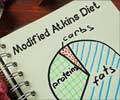
Not all obese individuals display the metabolic disturbances commonly associated with excess fat accumulation. Mechanisms maintaining this 'metabolically healthy obesity' (MHO) are as yet unknown. In this new research, the authors studied different fat depots and transcriptional pathways in subcutaneous adipose tissue (SAT) of participants to analyse their relationship to the MHO phenomenon.
The sixteen rare young adult obesity-discordant identical (monozygotic) twin pairs (intra-pair difference in BMI ≥3 kg/m2 and BMI range 20-40 and aged 23-36 years, were examined for detailed characteristics of metabolic health (subcutaneous-, intra-abdominal- and liver fat [magnetic resonance imaging (MRI)/ spectroscopy]), an oral glucose tolerance test (OGTT-to determine how quickly glucose is cleared from the blood), lipids, and certain markers of inflammation such as adipokines and C-reactive protein (CRP). The function of the mitochondria (part of the cell machinery) and inflammation in the SAT were also studied.
In all 16 pairs, the average weight difference between the obese co-twin and the lean-co-twin was 17 kg. In half (8/16) of the pairs the obese co-twin had significantly higher liver fat (around 7 times higher), a 78% increase in insulin production during OGTT, increased CRP, significantly more disturbance in the blood fat profile and greater tendency for high blood pressure compared with the lean co-twin. In these obese co-twins, SAT expression of mitochondrial oxidative phosphorylation, branched-chain, amino acid catabolism, fatty acid oxidation and adipocyte differentiation pathways were downregulated and chronic inflammation upregulated, all of which are metabolic problems that can lead to complications and disease.
In the other eight pairs, the obese co-twin did not differ from the non-obese co-twin in liver fat, insulin sensitivity, CRP, lipids, blood pressure or SAT metabolic characteristics.
The authors discuss that it is also possible that the MHO stage will change with age or with advanced obesity. However, at present the two metabolically distinct groups were of the same age and had similar age of onset of obesity difference between the twin pair. They speculate: "Weight differences between the groups were similar, but a given weight difference may have different metabolic effects depending on where in the distribution of BMI a pair is located."
Advertisement
Advertisement















